
Online Campaigning
Due to the war in Ukraine, militarism is being boosted all around the world and many countries have This year, the world reaped the horrors of its investments in tools of war. The violence being perpetrated on people around the world at the hands of militarized states has had devastating impacts on humanity and the environment. The $1.98 trillion spent on militaries in 2020 did not provide true security— instead, these bloated budgets for weapons and war kept us mired in cycles of violence. It is time for us to join together and call on governments around the world to cut military spending, and to instead invest in common and human security. We need to give peace a budget.
1. Take action online: use your social media to get a
buzz going in your own network; help spread the word on
demilitarization and disarmament by sharing news, materials and actions;
- Sign our Appeal: Give Peace a Budget (for organizations). On April 25 we’ll make it public with a list of endorsing organizations. Translations will be available here soon.
- Be part of our Social Media Storm on April 25. That day we need to make our message go viral! Amid health, environmental and socioeconomic crises, we’re joining our voices and taking action online to urge governments across the world to give a budget to peacebuilding, funding common & human security, investing in the needs of the people and the planet.. You can find instructions and materials on our Shared Folder.
- Put pressure on your representatives and demand them reductions of military expenditures.
- Share our social media pics & infographics and social media pics via Facebook, Twitter, Instagram, Whatsapp, Telegram or email!
- Stay active on online debates, share ideas, articles and actions. Write an op-ed! Our understanding of these crises and how we tell its story as a society will define the measures to be taken afterwards.
2. Prepare a press conference or a press release.
On April 25 we’ll analyse the new data on military spending released that day by SIPRI and get our message on the media: we demand major reductions on defence budgets, instead of the increases expected and announced in many countries. So far we have confirmed press conferences in Seoul, Berlin, Barcelona and Manila. We’ll prepare a common press release too, if you want to send it to your media list, please reach out to us in our email.
3. Prepare a webinar or participate in them:
Participate in the online events of the campaign, as the webinars organised by IPB, Scrap Weapons of AFSC.
4. Use your own networks to spread the word on alternative budget priorites and on the need to drastically reduce military spending. Find allies: reach out to groups in your country and to other civil society organizations and movements with common causes and values;
#MOVETHEMONEY CAMPAIGN – INSTAGRAM FILTER
WHERE WOULD YOU MOVE THE MILITARY SPENDING MONEY TO?
For this year’s Global Days of Action on Military Spending (GDAMS), that will take place from April 10 to May 17, we are re-launching our Selfie Campaign, but this time we’ll be using an Istagram Filter, which incorporates the ‘#MoveTheMoney’ banner and randomly assigns alternatives.
To participate just follow these 4 steps:
1. Find our filter here (AVAILABLE FROM APRIL 26 ONWARDS)
2. Once you have the short video, publish it on Instagram and other social media, tagging us:
 @DemilitarizeDay
@DemilitarizeDay
 @DemilitarizeDay
@DemilitarizeDay
 @gcoms
@gcoms
You can also tag @IntlPeaceBureau and partner organizations.
If you prefer us to post the picture for you, send it to us on a private message on social media or to our email: coordination@gcoms.ipb.org
You can also tag @IntlPeaceBureau and partner organizations.
If you prefer us to post the picture for you, send it to us on a private message on our social media or to our email: coordination@gcoms.ipb.org
4. Lastly, use some of the hashtags of the campaign:
#MoveTheMoney #Demilitarize #GDAMS #GCOMS
#HealthcareNotWarfare #MilitarySpendingCostsUsTheEarth
#DivestFromWar #PeaceNotWar #WelfareNotWarfare #FundPeaceNotWar #CutMilex #BuildPeaceNotWalls #FundHumanNeeds #StopTheWarOnLife
- Should governments move the money from the military sector to tackle climate and environmental emergencies?
- To provide quality education for everyone?
- To ensure free health care to all citizens?
- To provide humanitarian aid?
- …
Let’s flood the internet with messages of peace and demilitarization!!
If the situation in your city/country permits it, please prepare your own street actions!
To find inspiration on how to plan your actions, check out the GCOMS Handbook.
The first part of the Handbook includes an introduction to the problem of military spending. Recent global data are presented to underline the magnitude of the problem, the connection between military spending and the military-industrial complex and the basic dichotomy between military spending and human needs. Military spending is also discussed in a framework of security models.
In the second part, some precise definitions of military spending (Milex) are presented and discussed. It is shown that military spending is always greater than the figures presented by national states and alliances like NATO, because of hidden budget items. In any case, there is no universal accepted definition of Milex, and this is a fact that makes very difficult to undertake reliable analysis on its evolution, structure and trends.
The third part of the Handbook presents the GCOMS campaign. Including some advice, ideas and inspiration in order to campaign for the reduction of military spending in the framework of GCOMS, by presenting a compendium of several strategies, related to public-awareness actions, lobbying to politicians and other key stakeholders, online campaigning, media coverage and networking.
The Handbook was presented during a Webinar on February 27, 2018. It included presentations from Rete Disarmo and the GCOMS Coordination team.


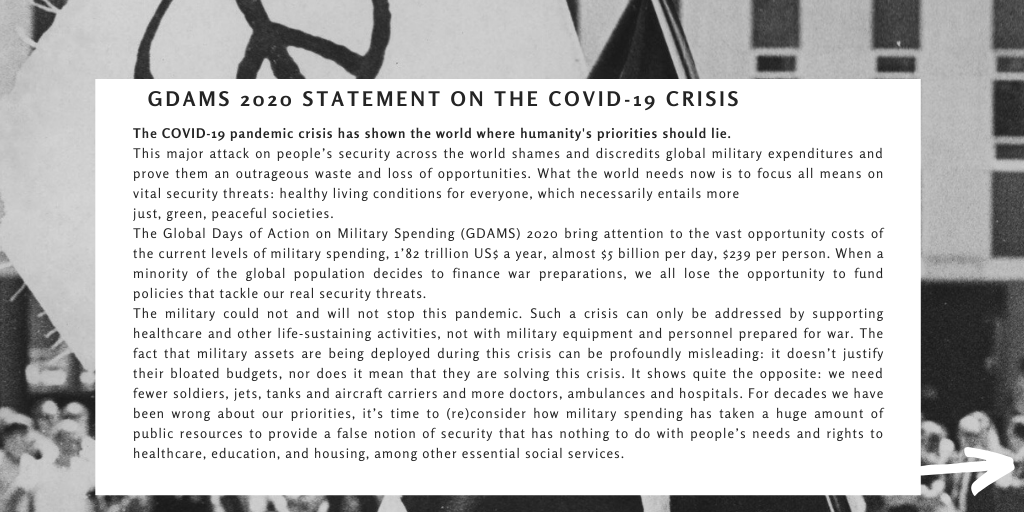
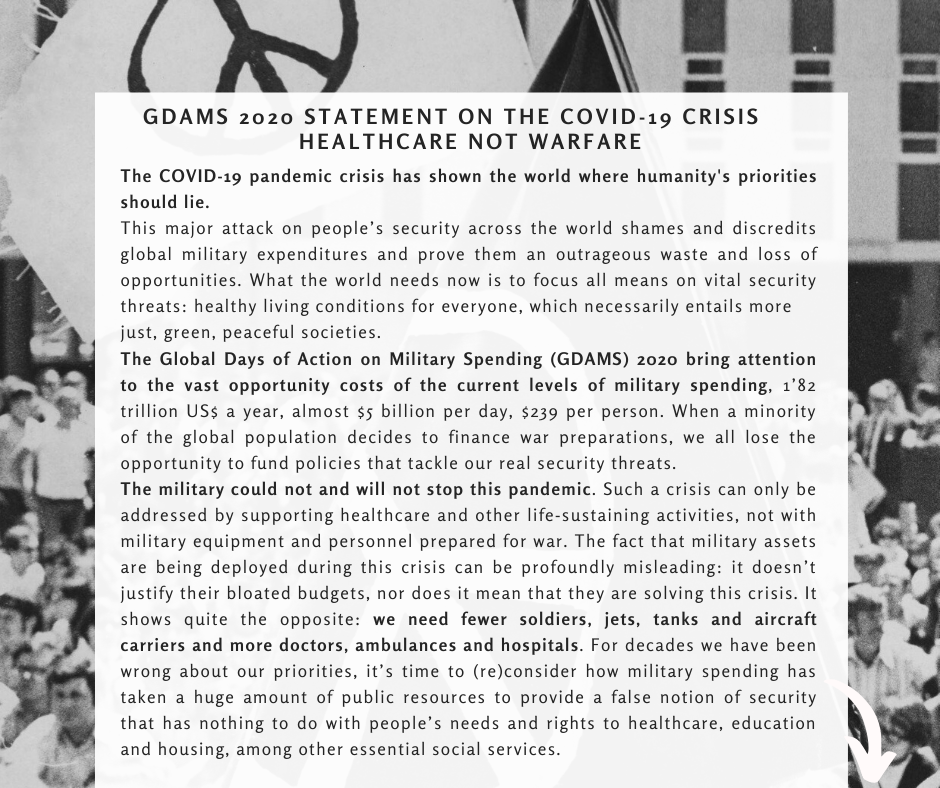

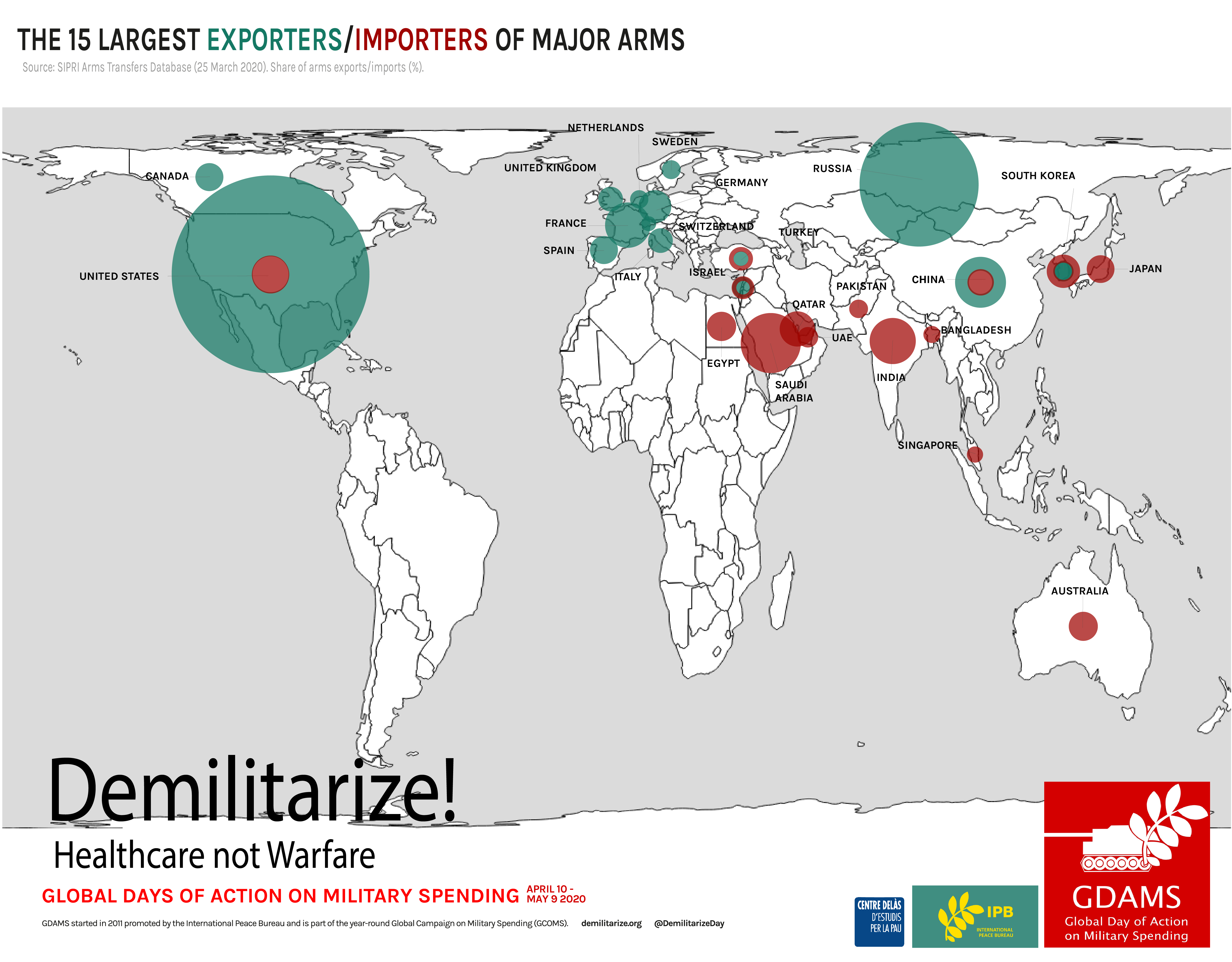

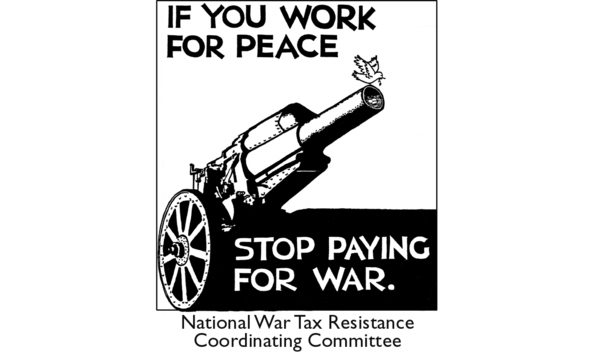
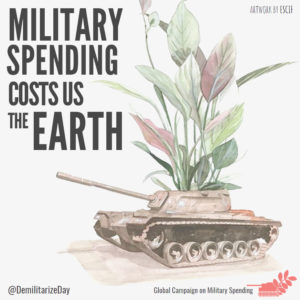
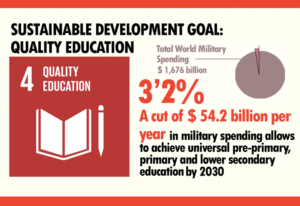

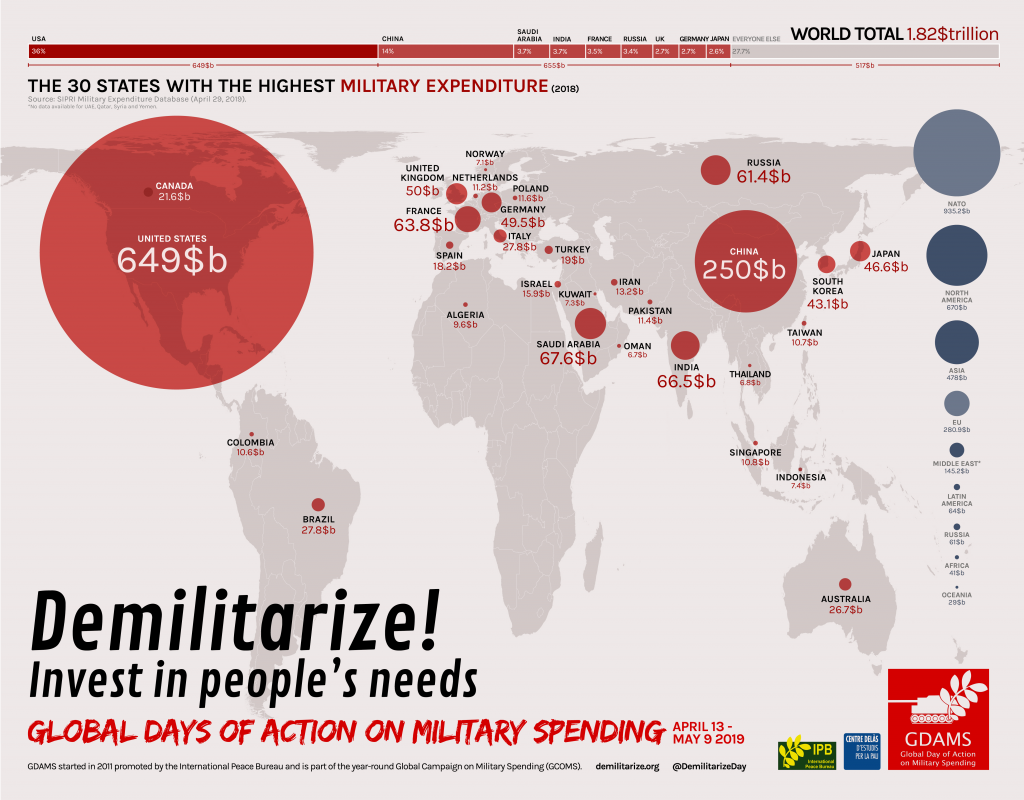
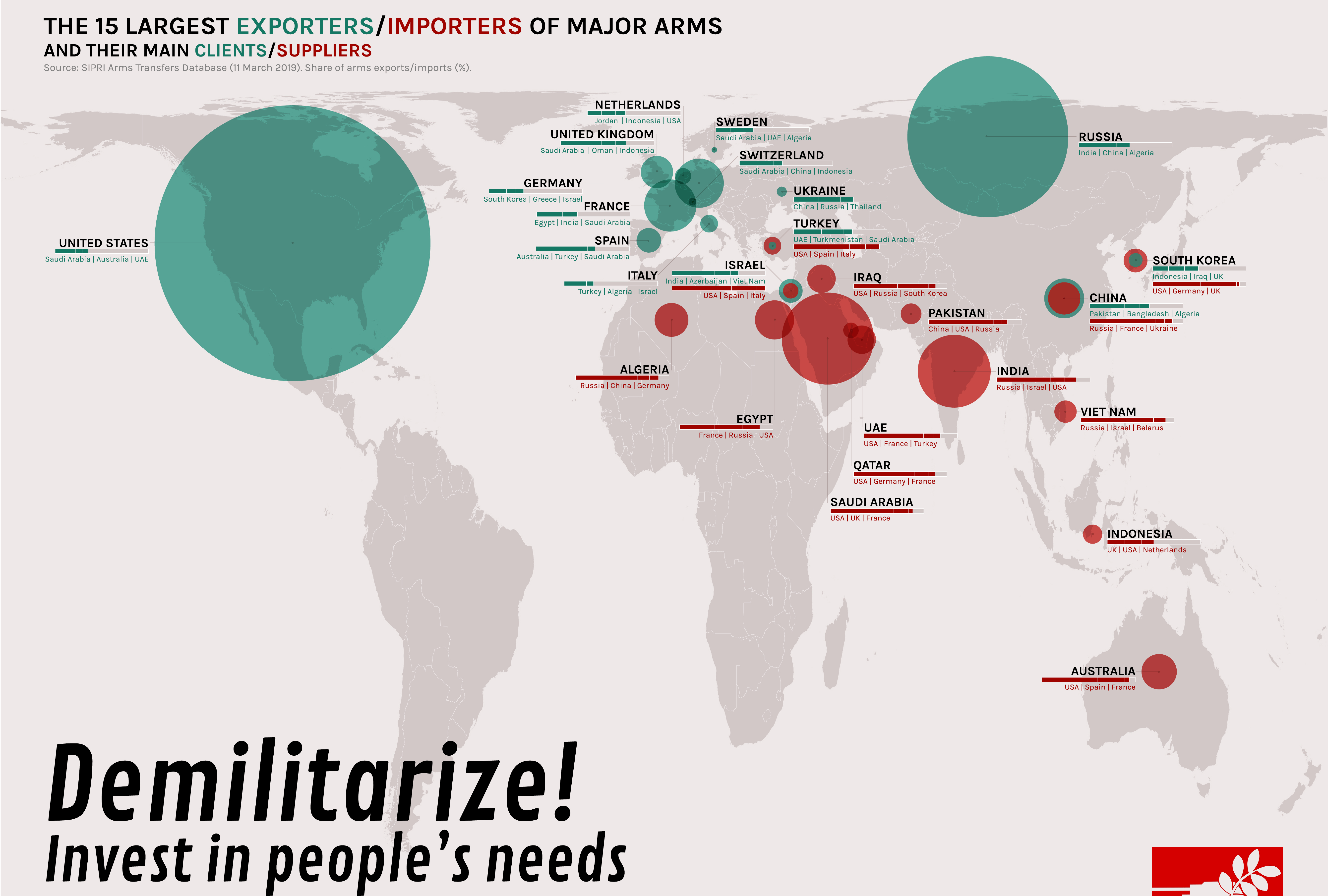




 @DemilitarizeDay
@DemilitarizeDay @DemilitarizeDay
@DemilitarizeDay  @gcoms
@gcoms
